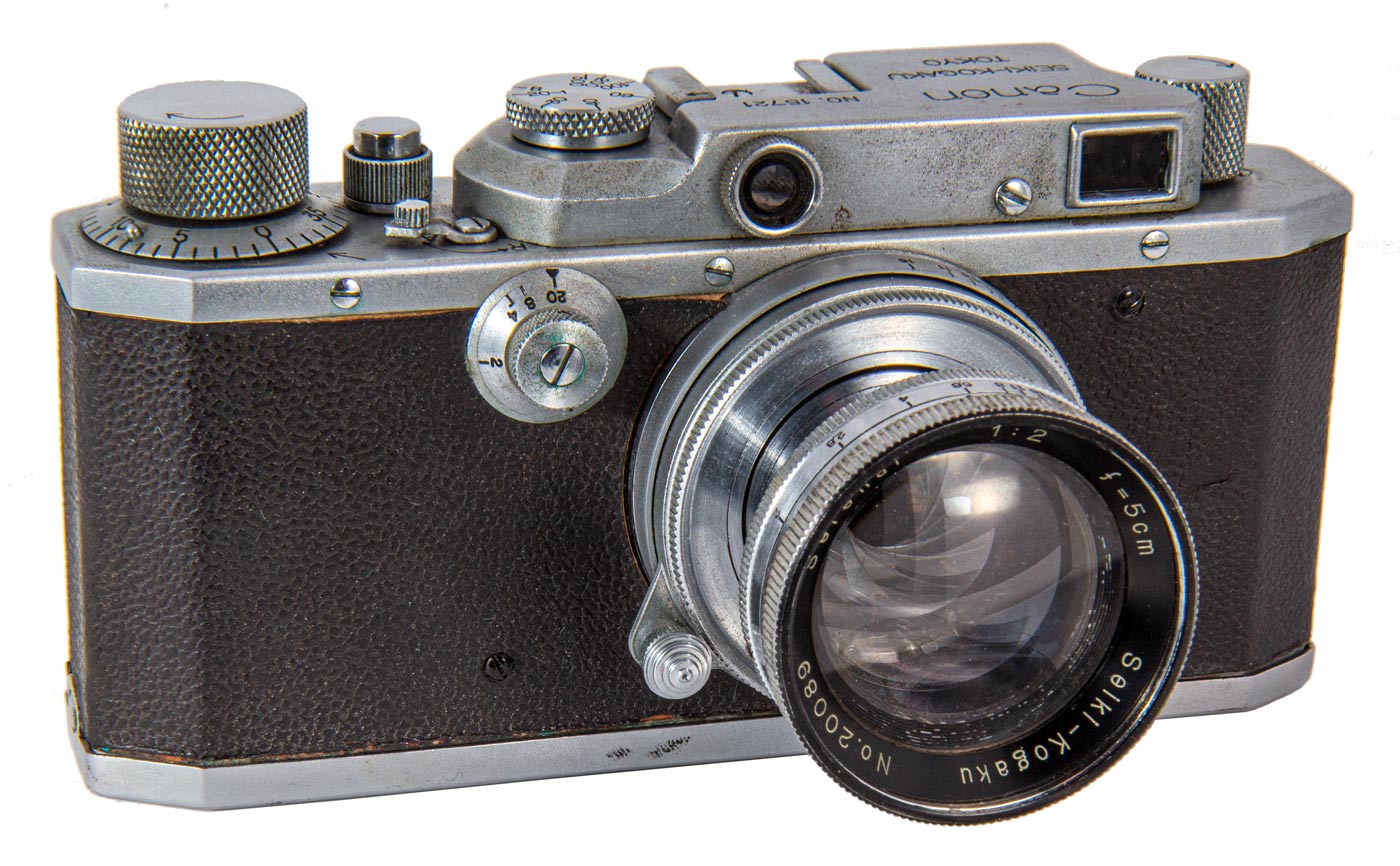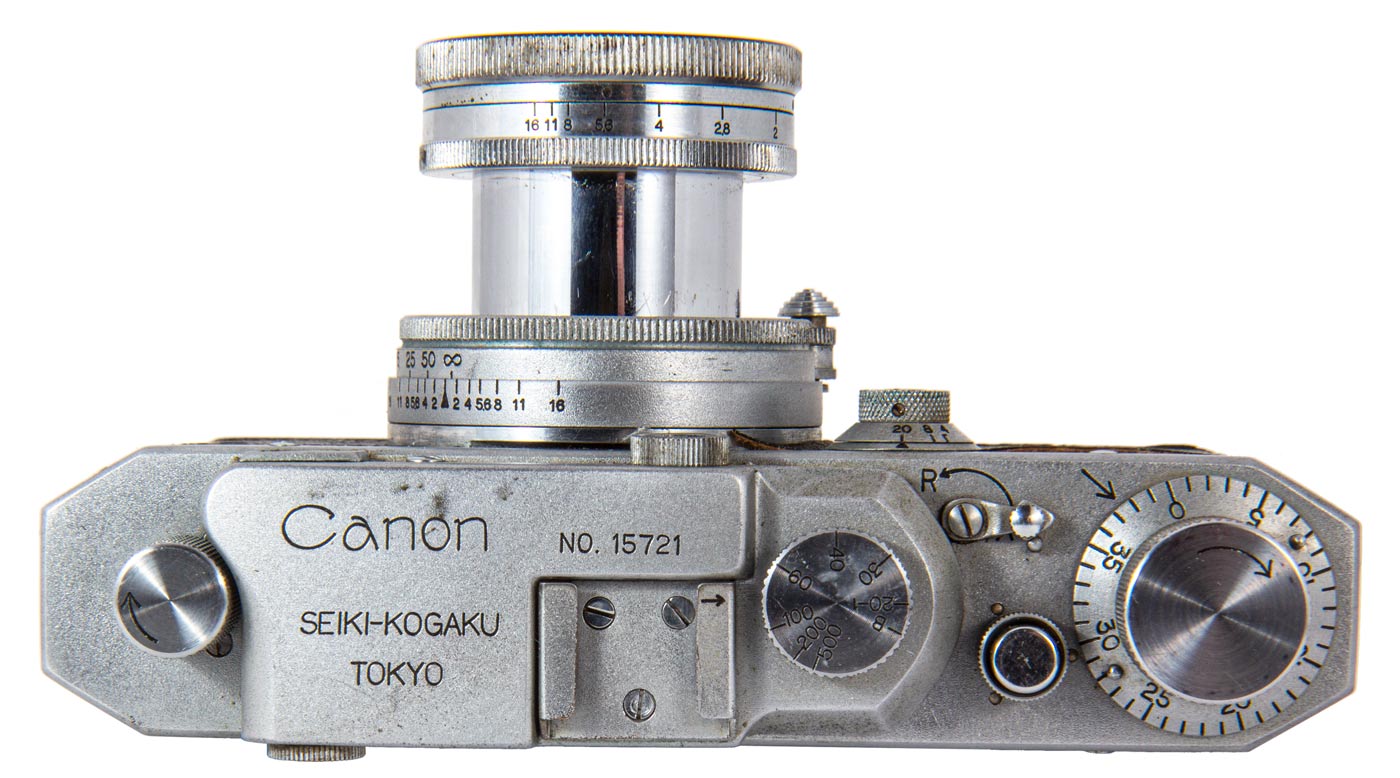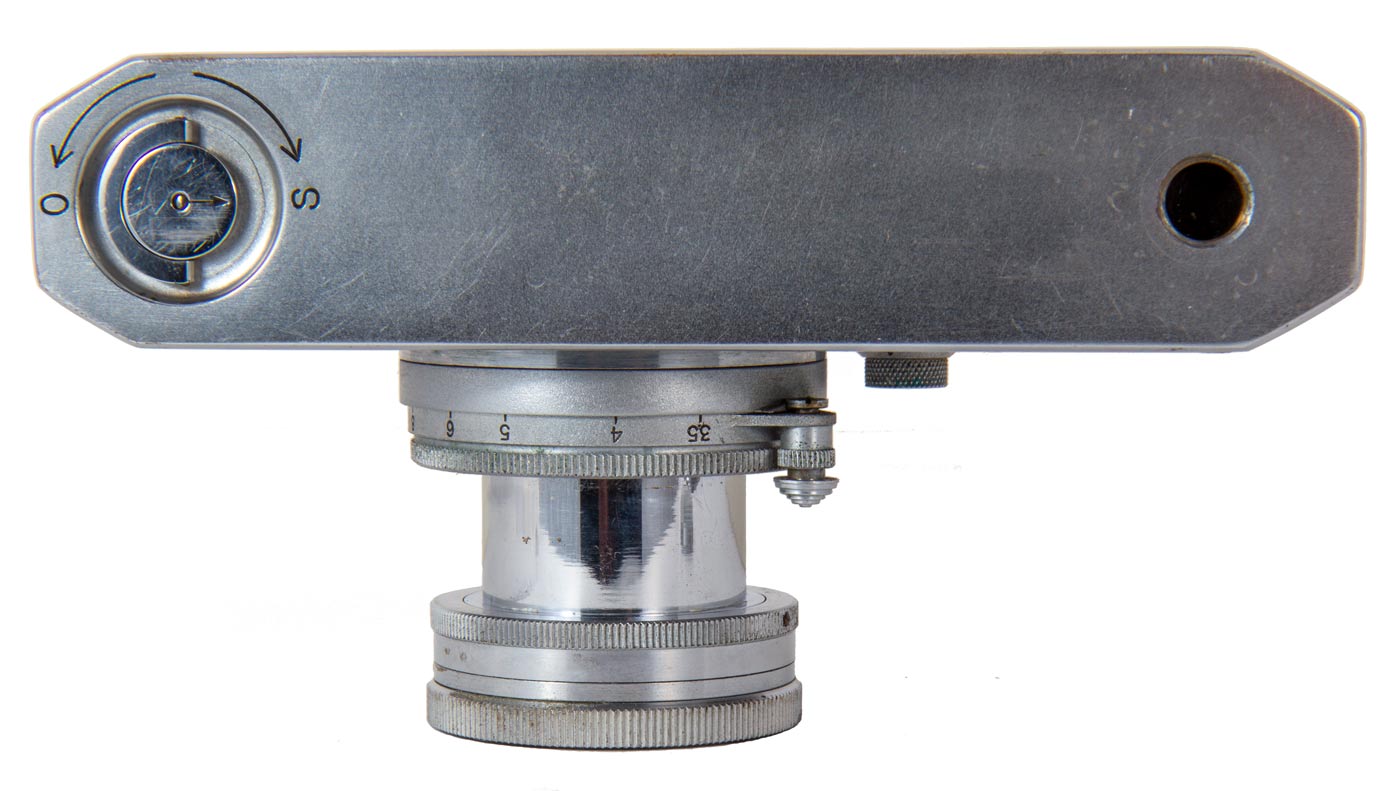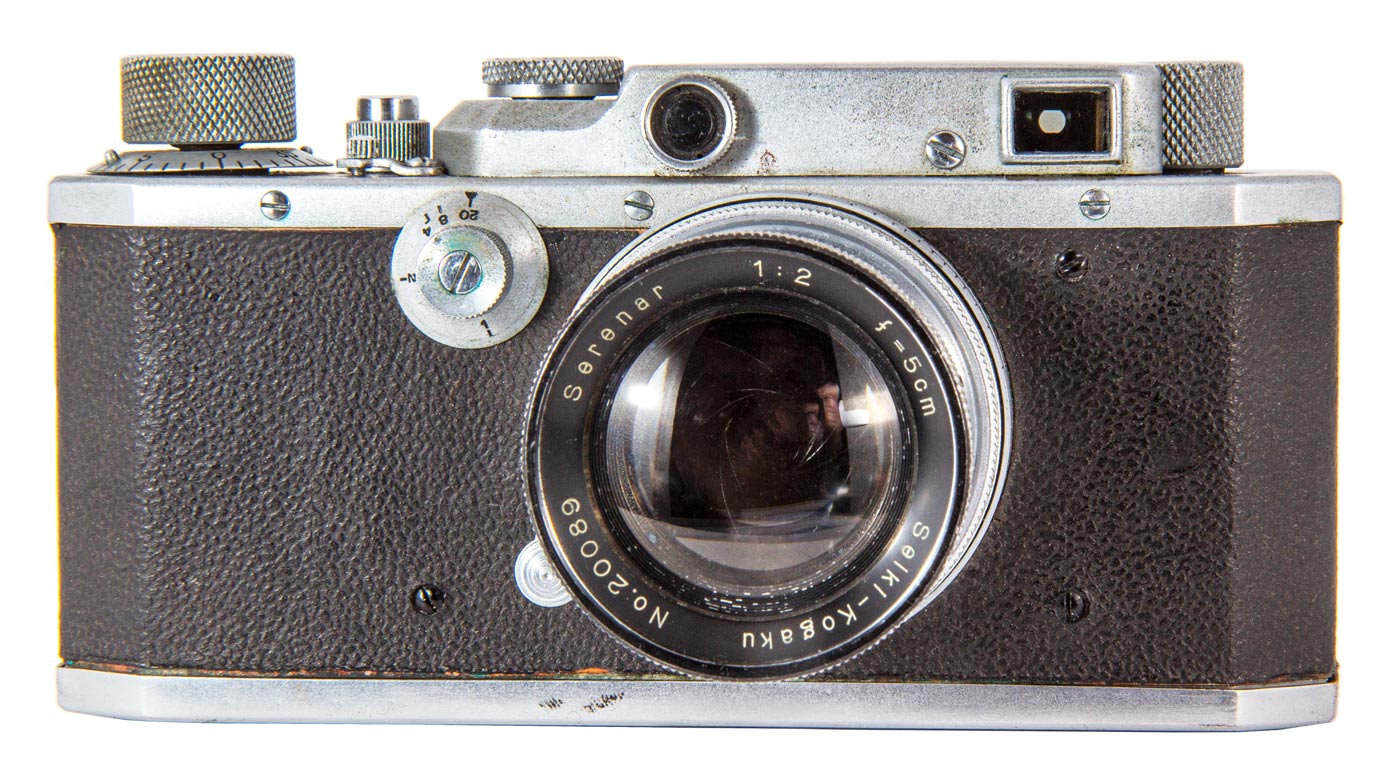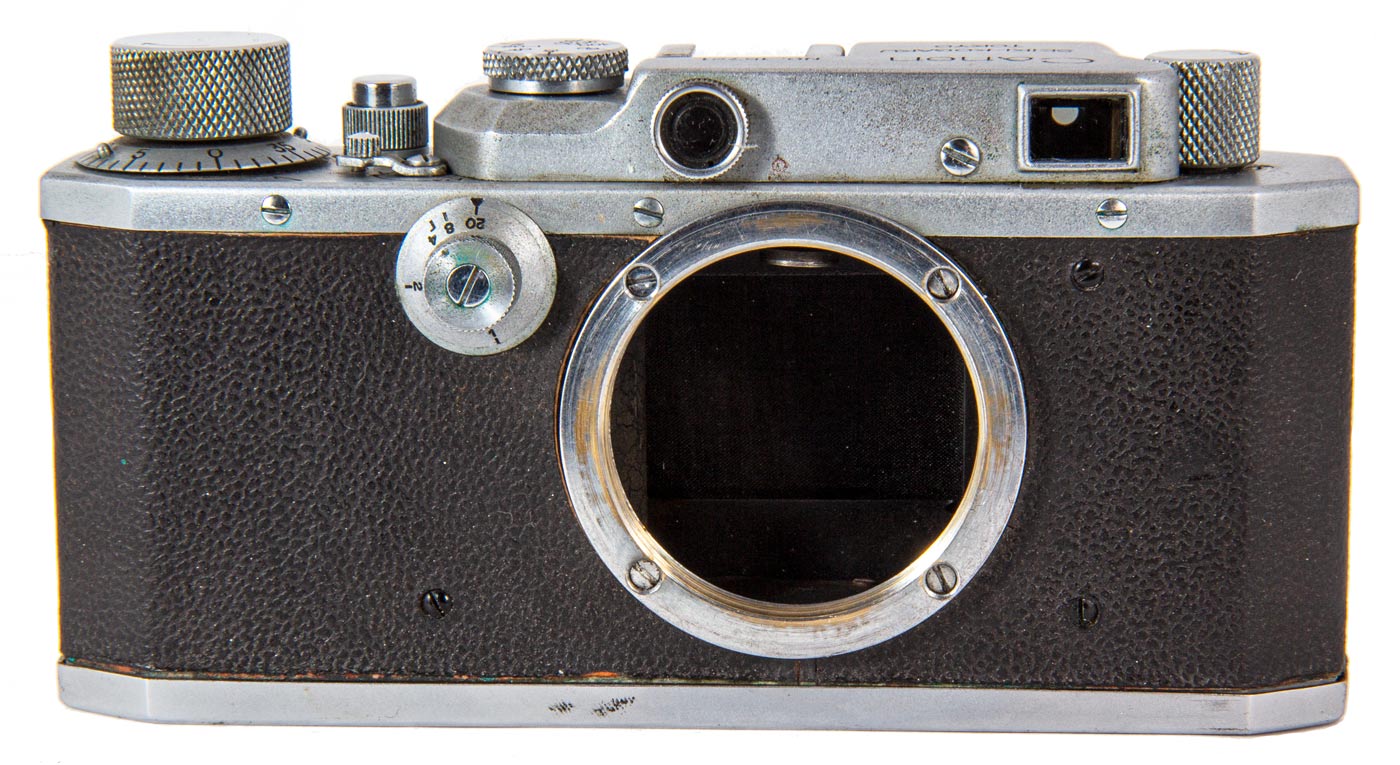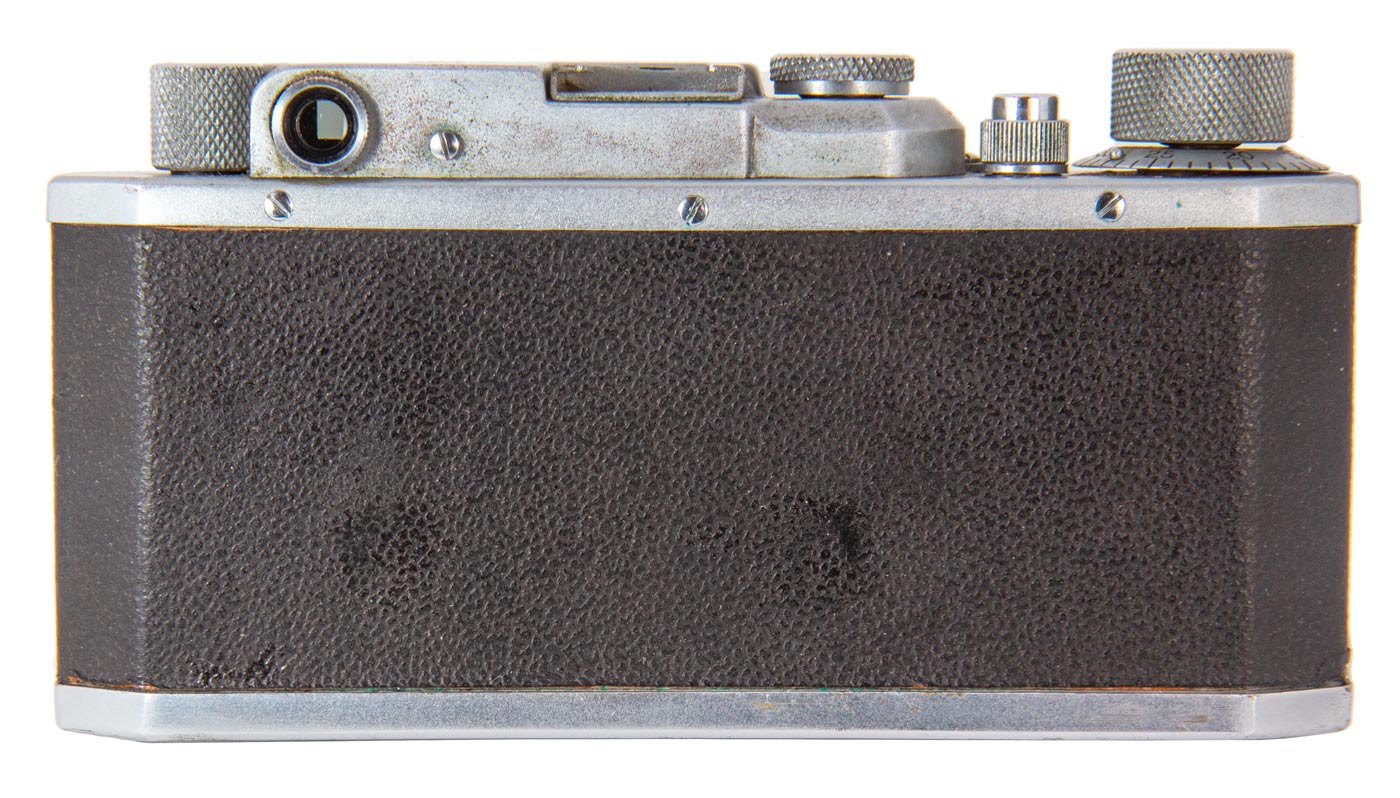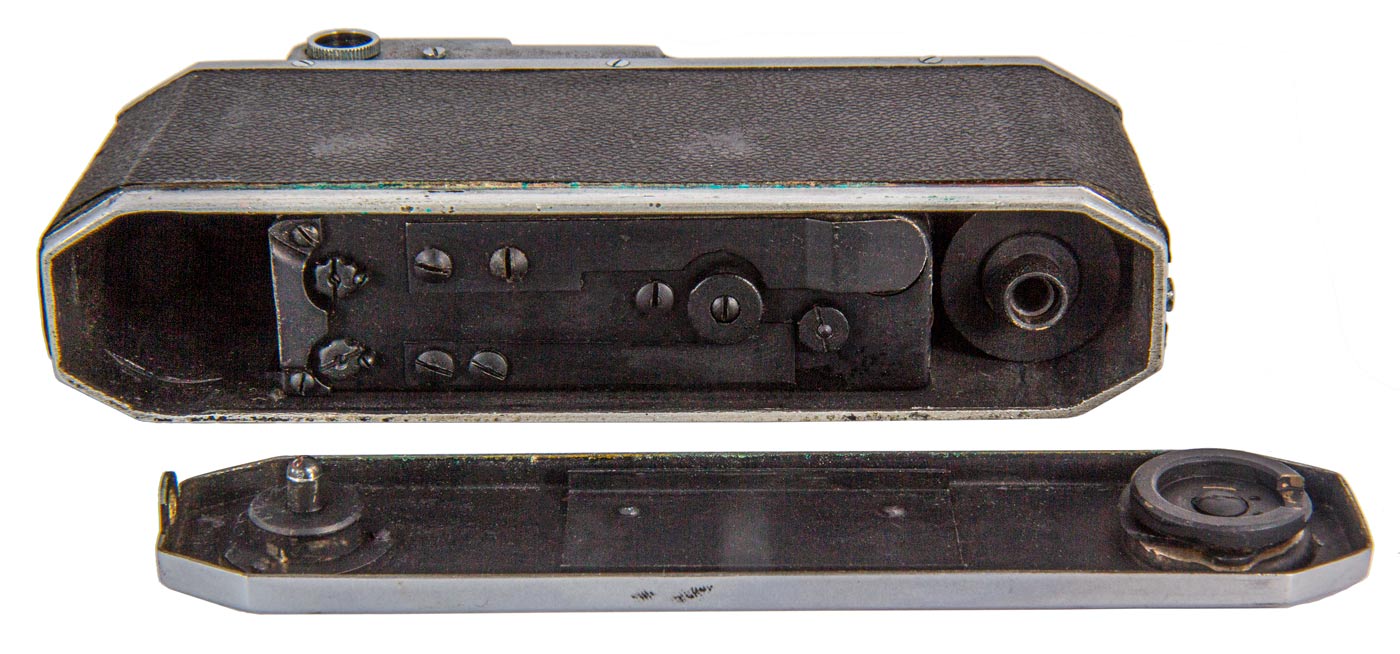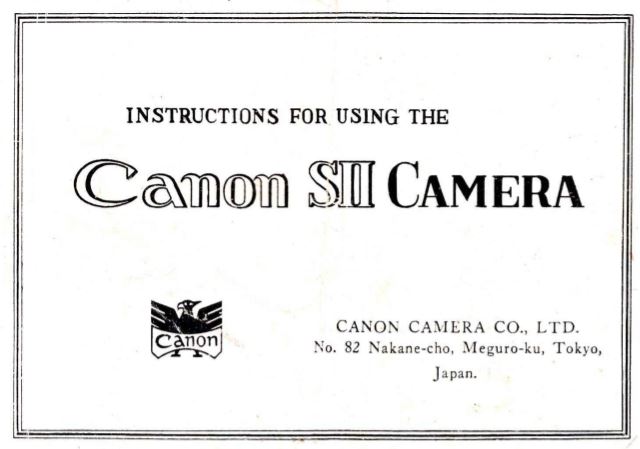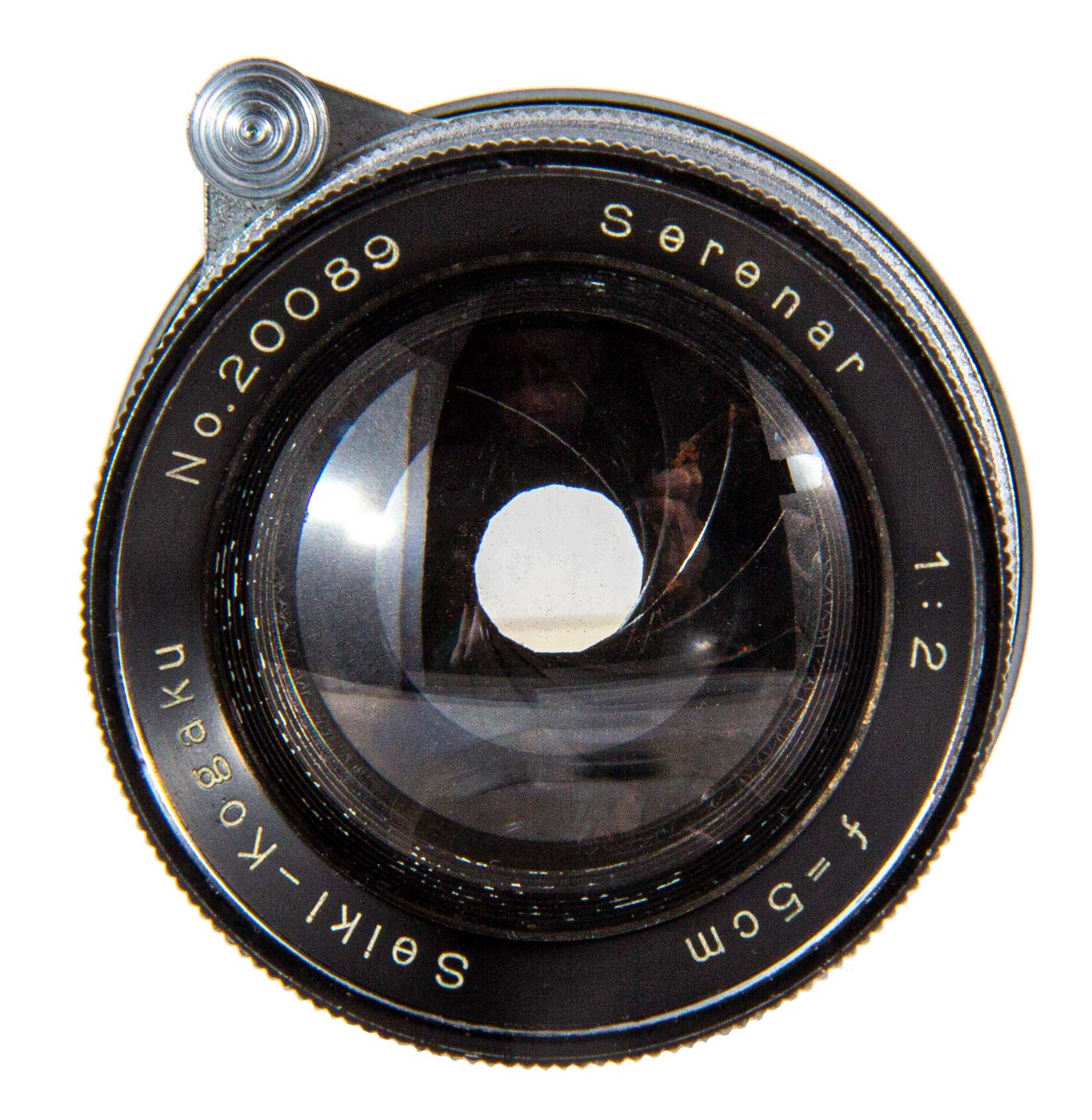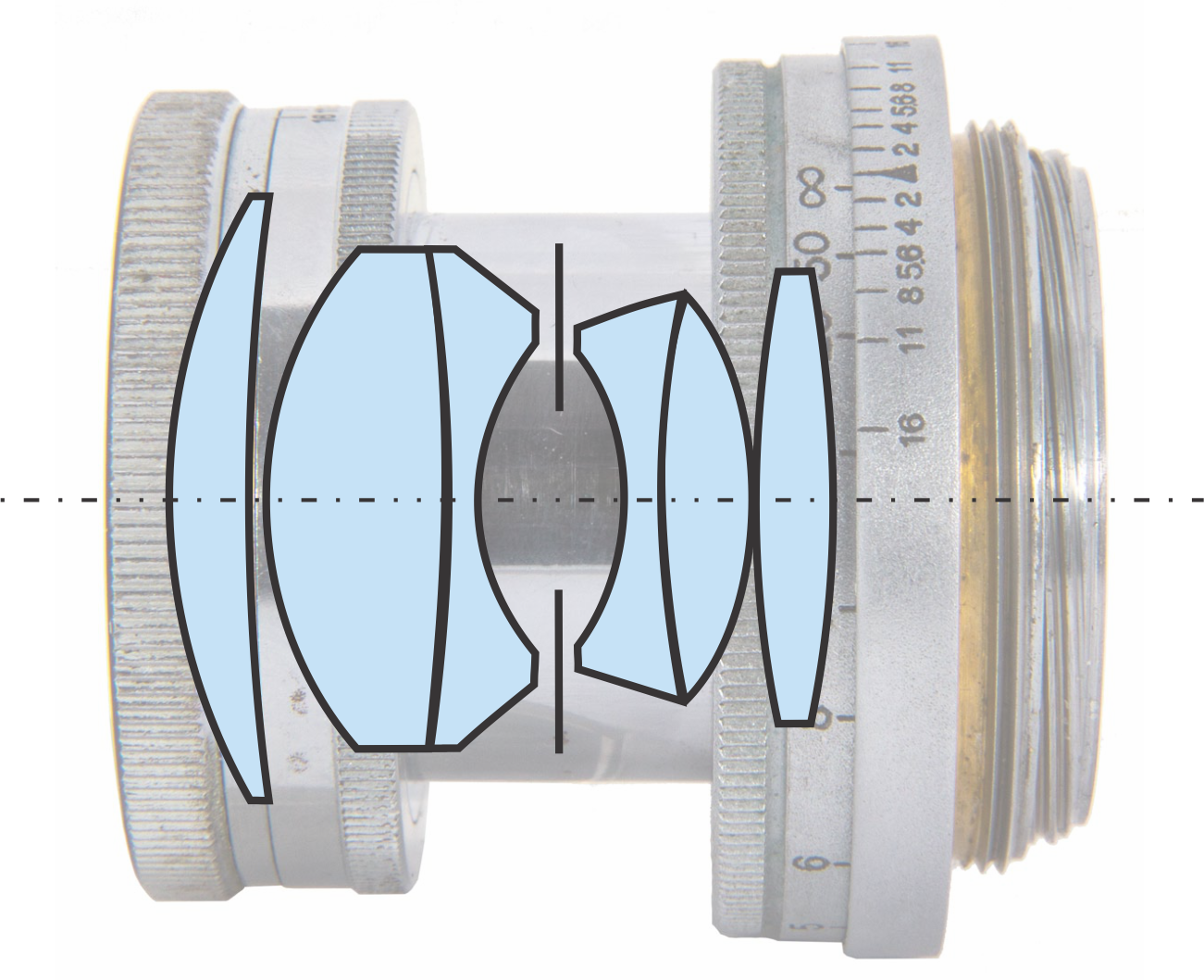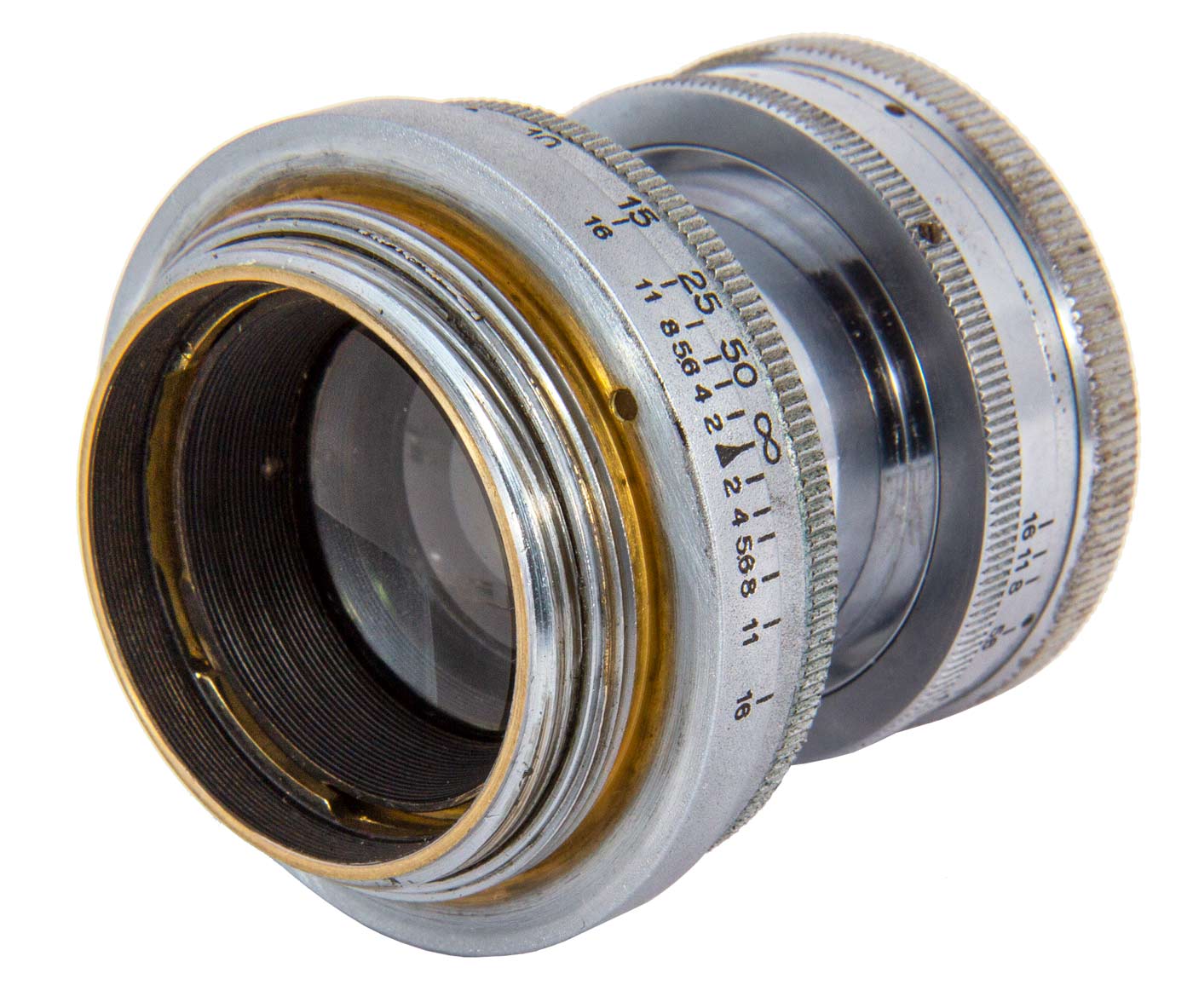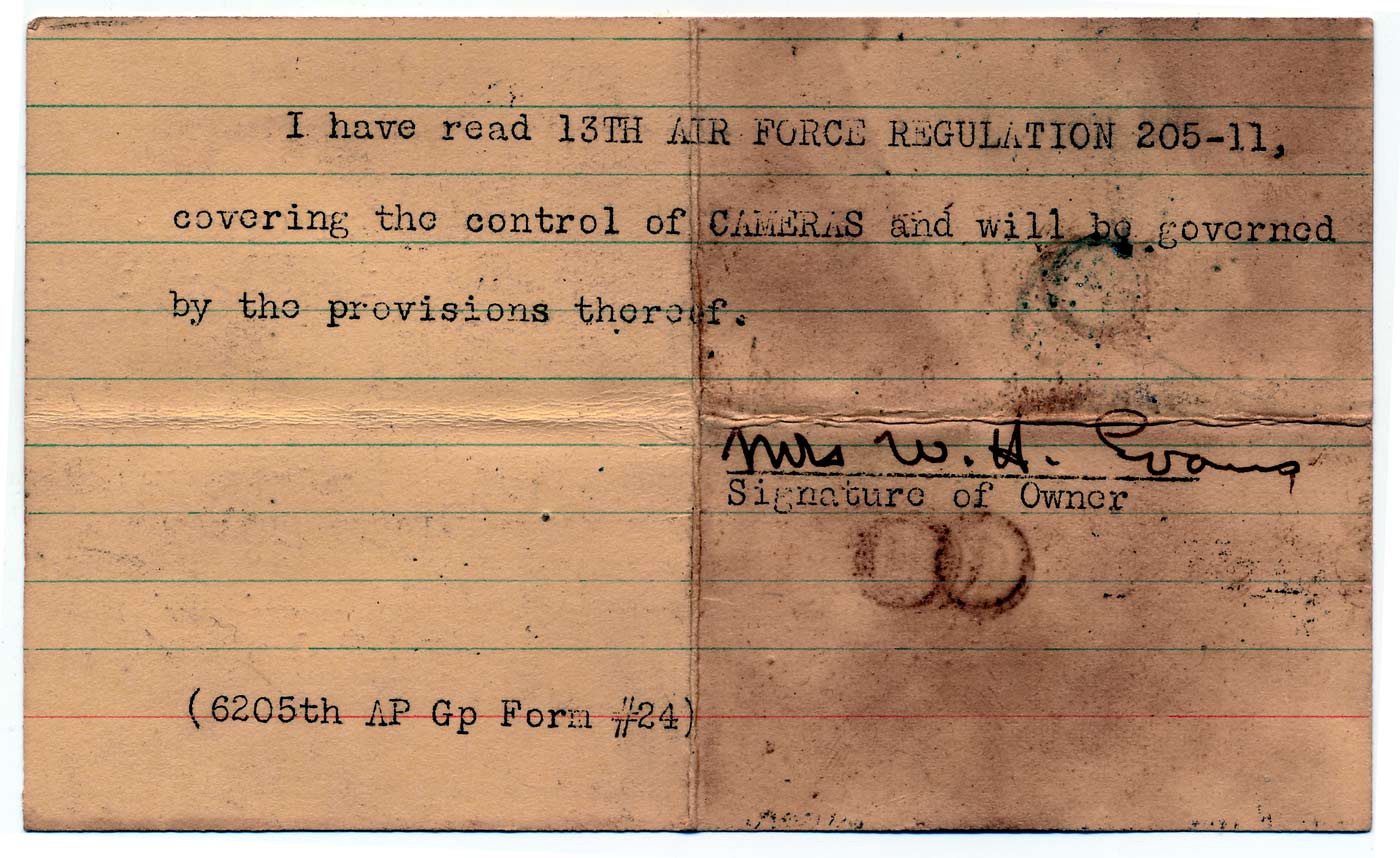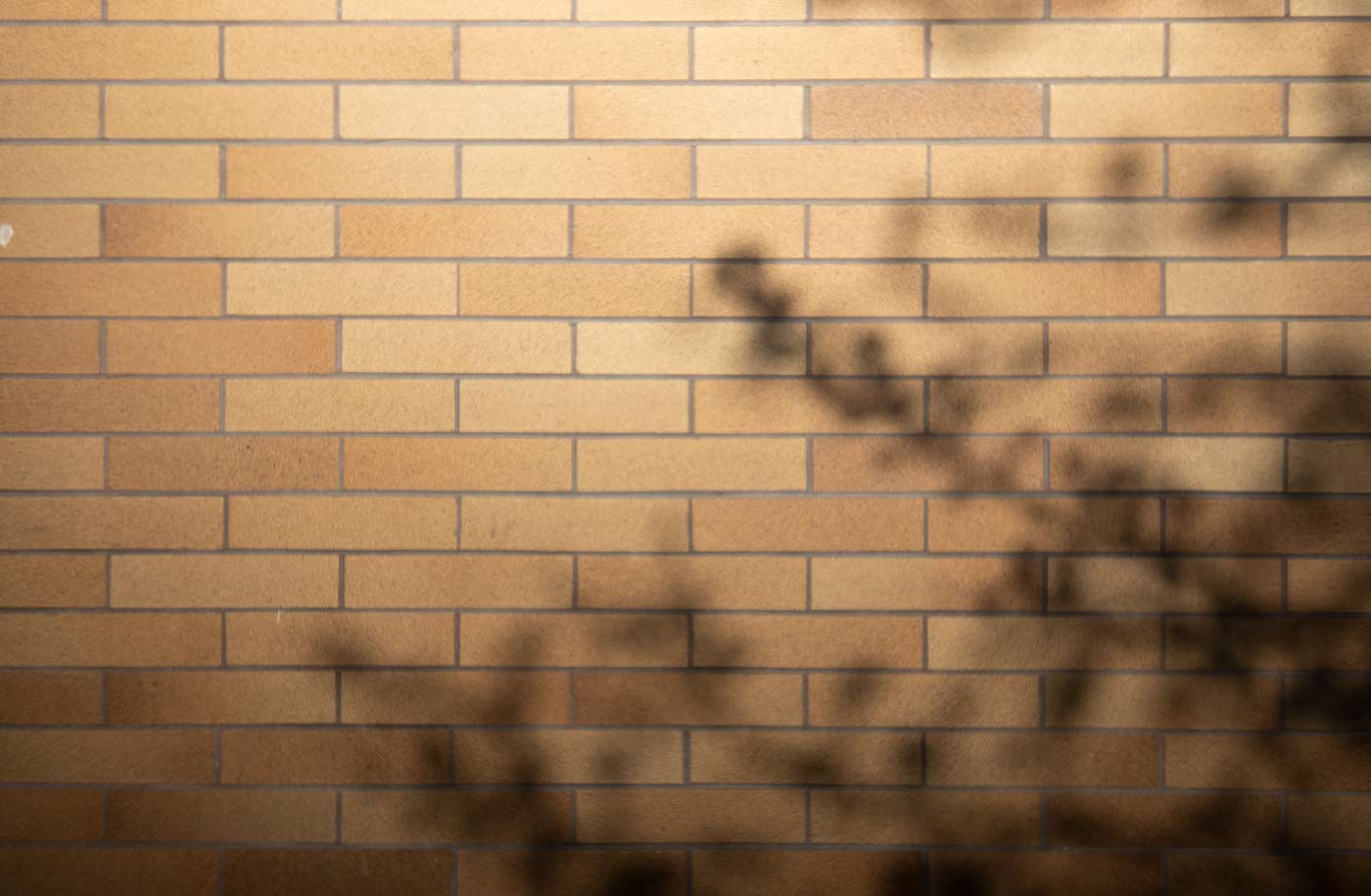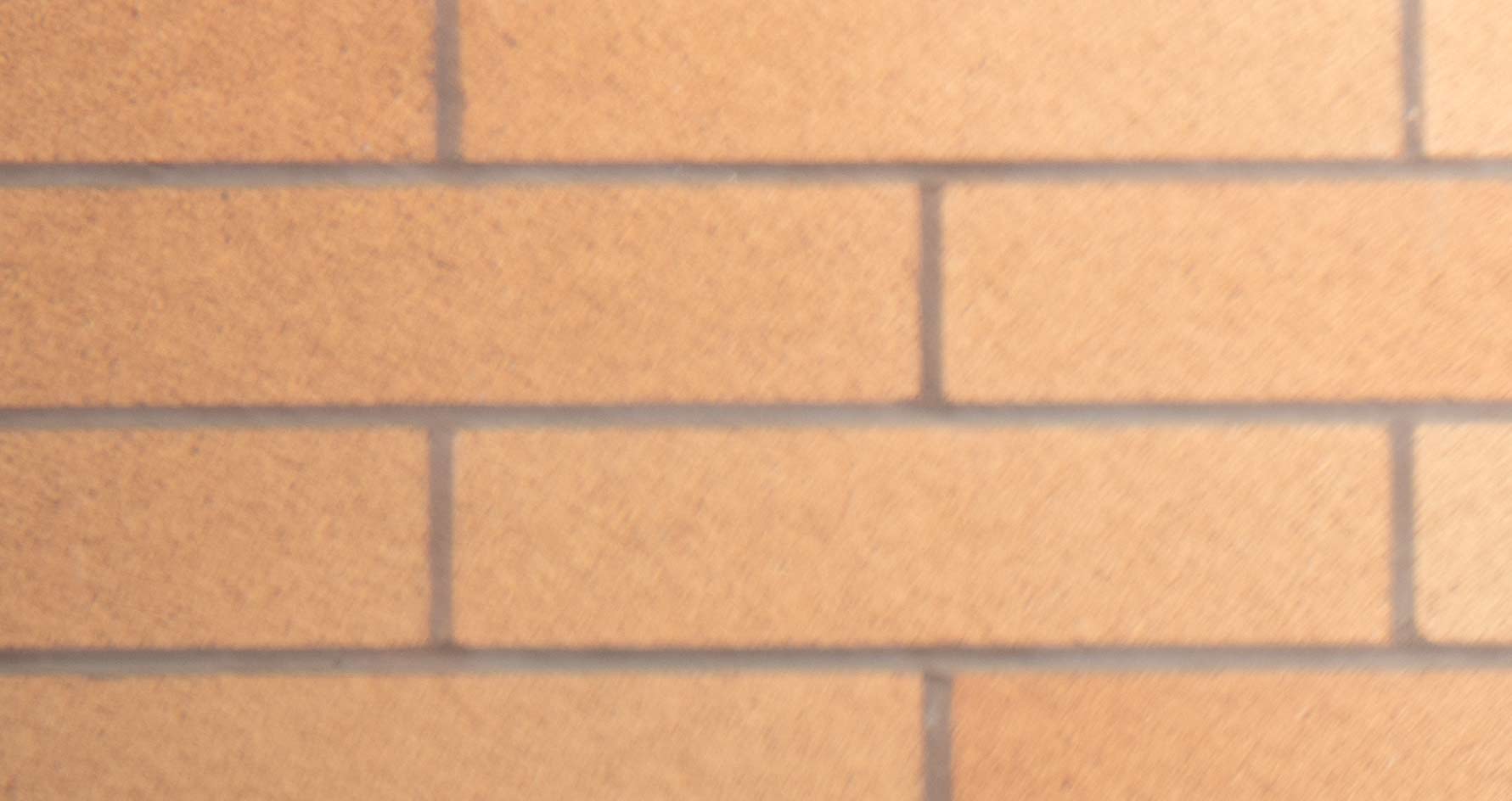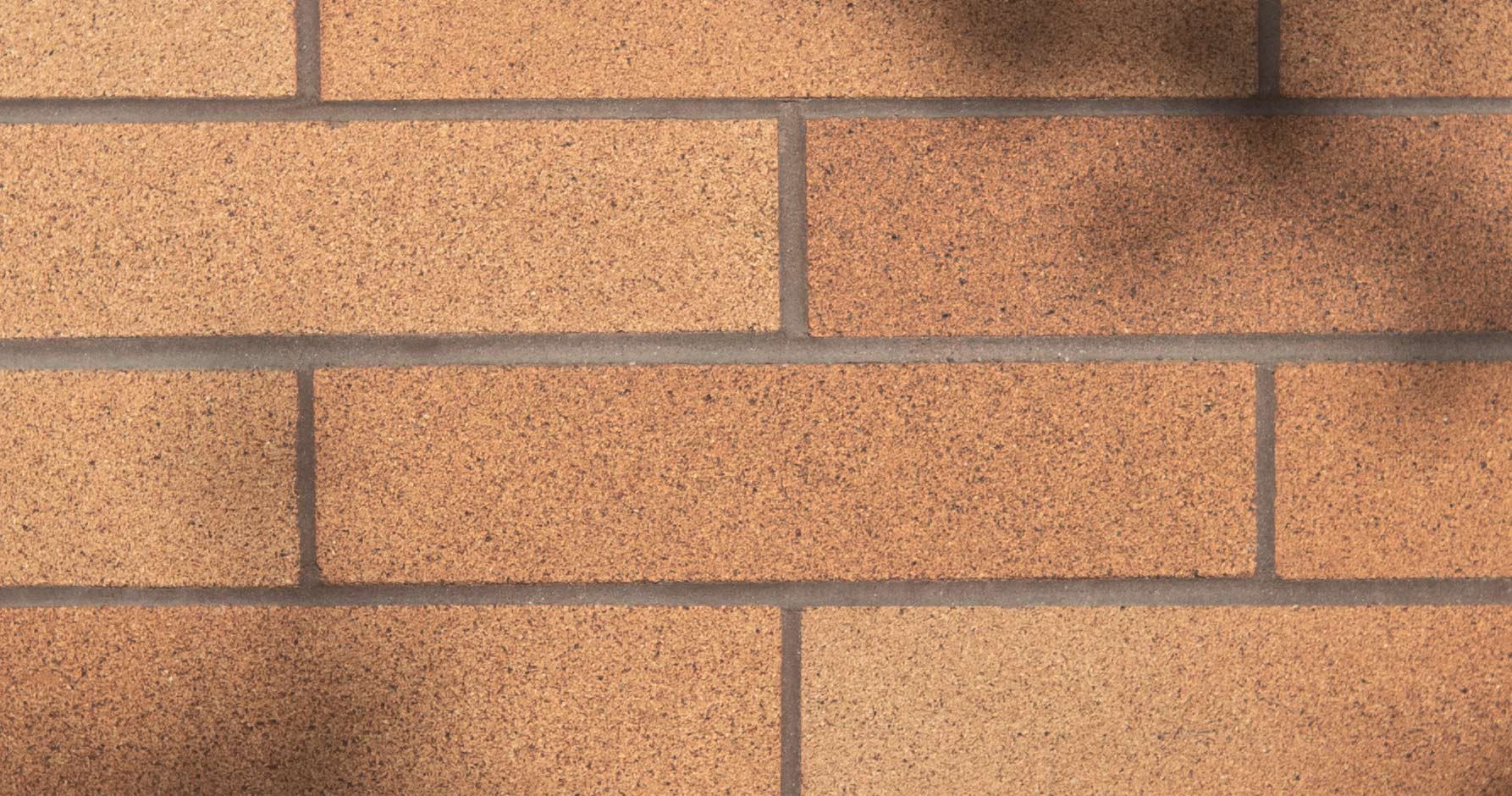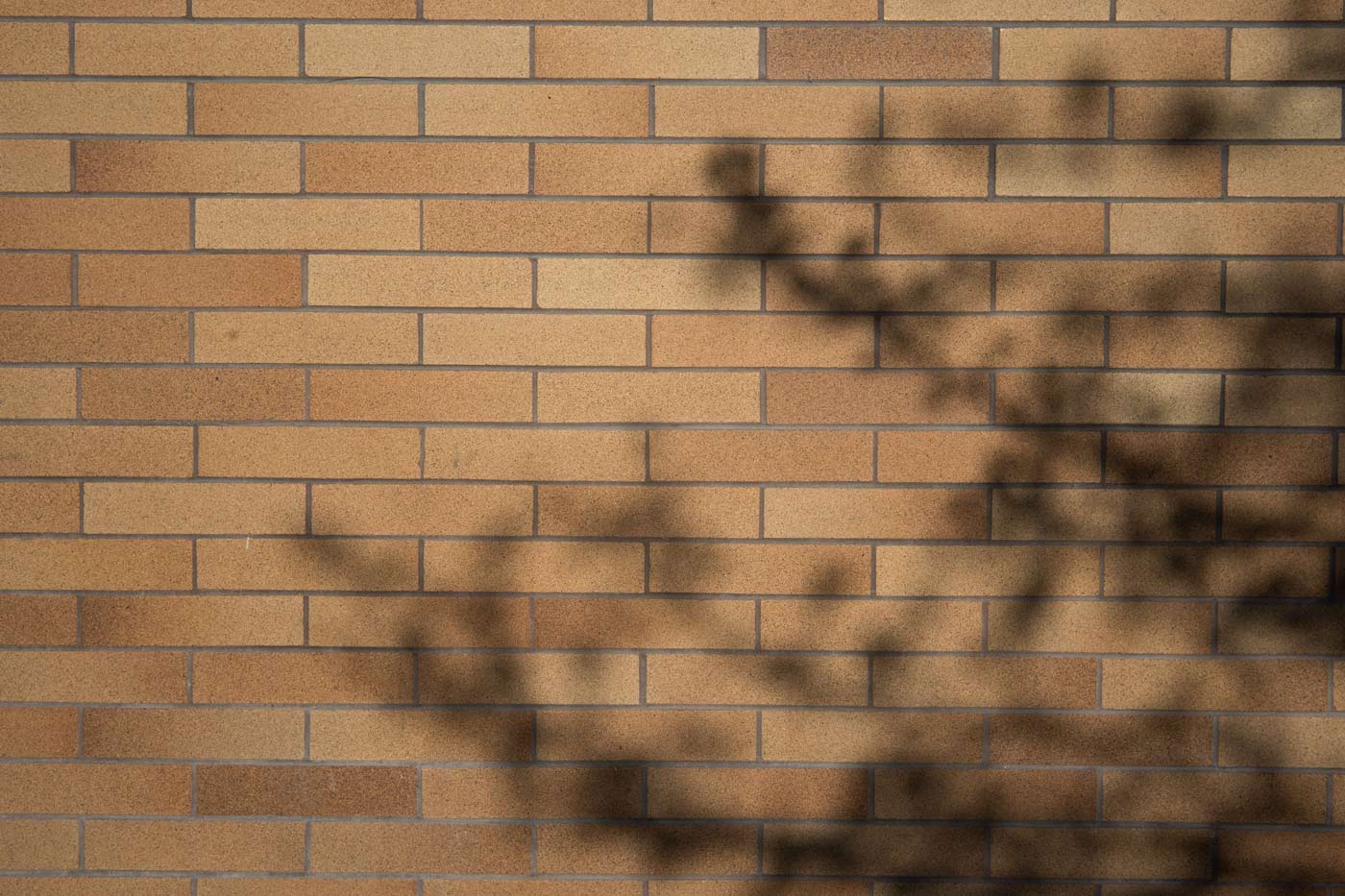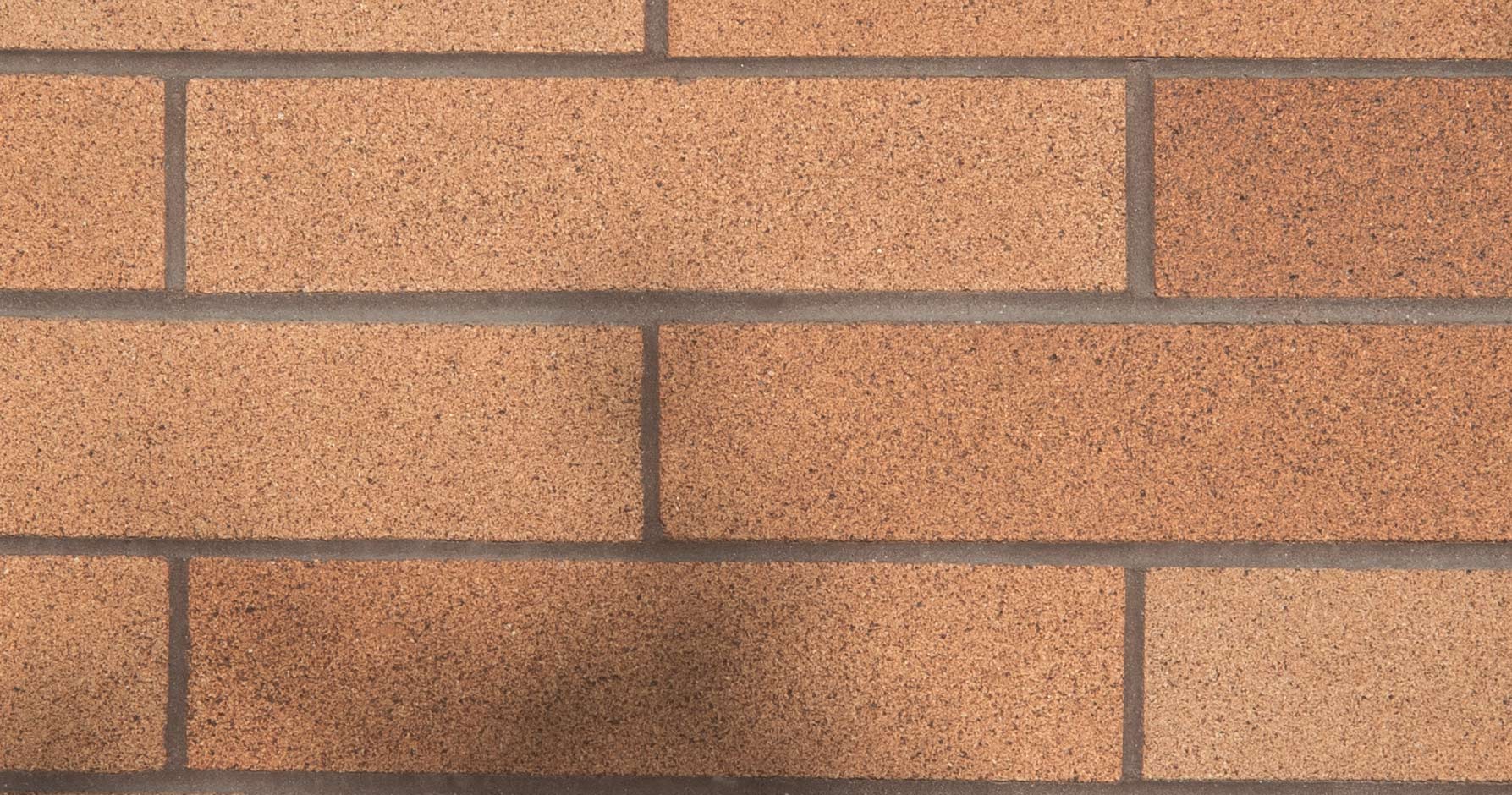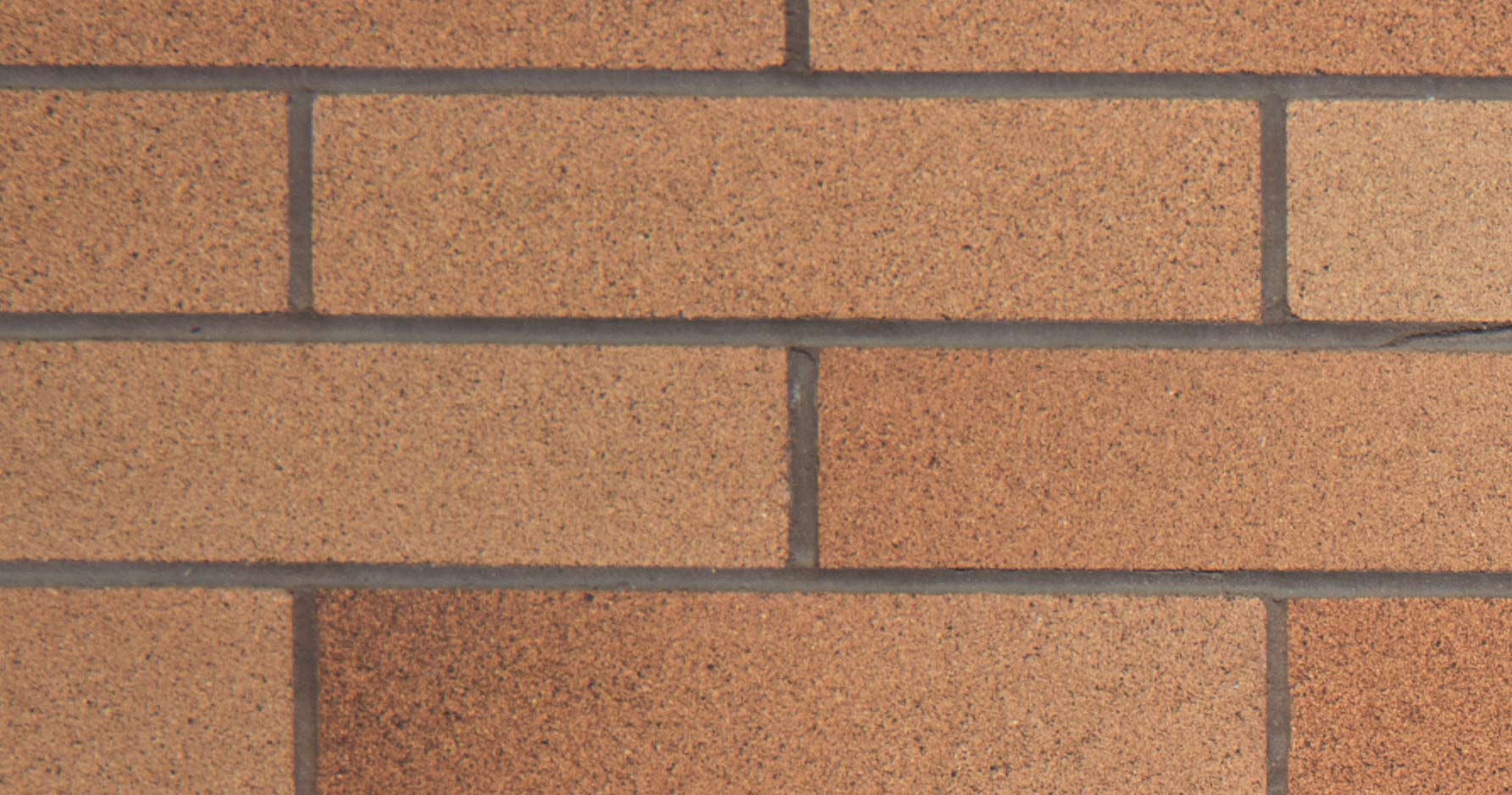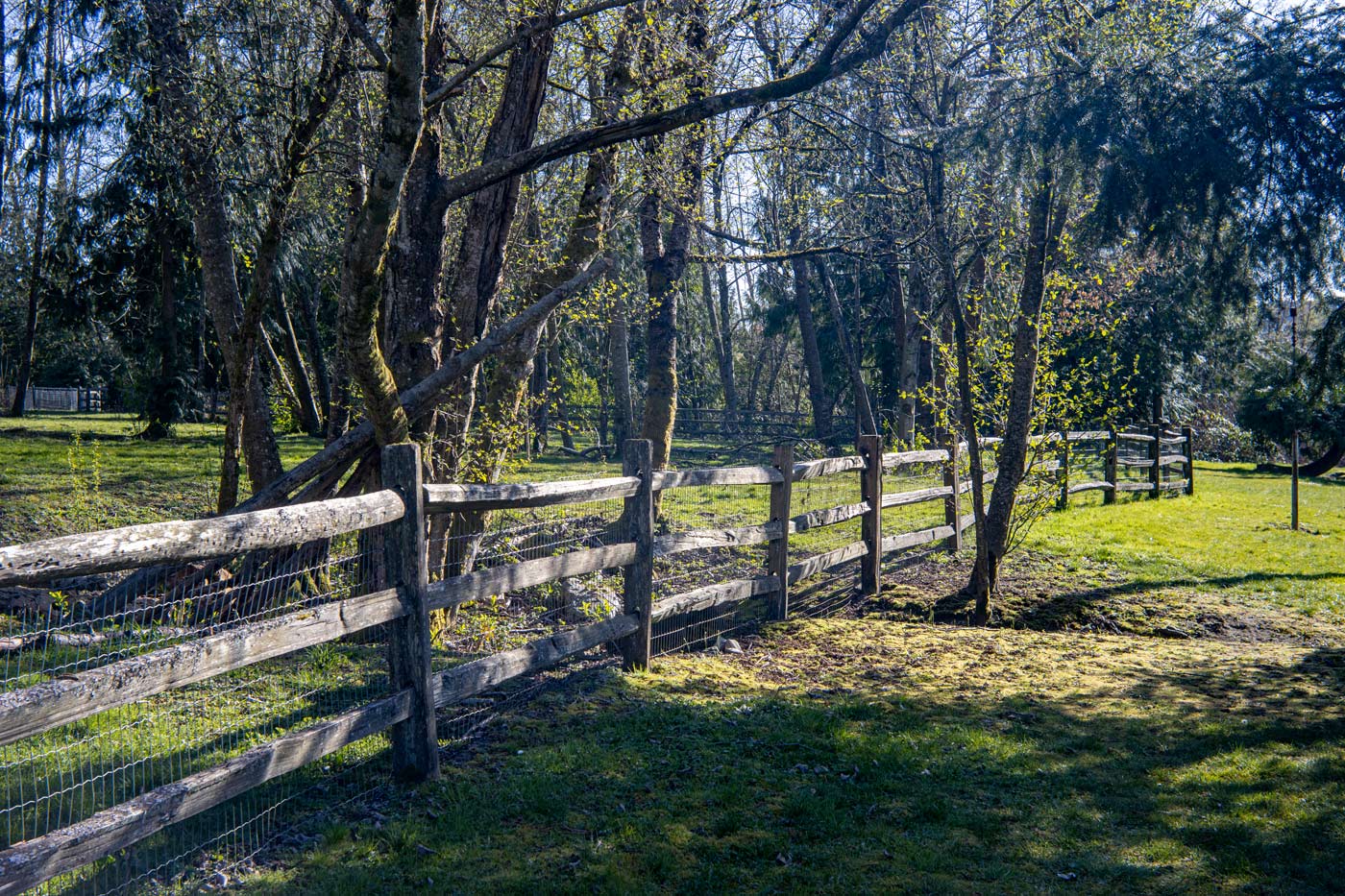Seiki-Kogaku Model S-II
the almost beginning
My collection is not terribly valuable. I have been acquiring easily obtainable cameras that don’t cost too much. But this last February was my birthday and so I decided to treat myself to something a little more desirable as a birthday present: a Seiki-Kogaku Model S-II. I found it on E-bay and it sounded good. The package included the camera body, the correct Serenar 50mm f/2.0 collapsible lens and the leather case for this model. And when it arrived I was thrilled.
Every new addition to the collection is an adventure in learning and they all go the same way: the camera or lens is carefully cleaned and photographed, a web search is done and notes taken, then out come the books, read the instruction manual, and then test everything to see if and how things work. And this camera has been a particular adventure!
This is my birthday present! The body is an early Seiki-Kogaku Model S-II and it has the correct lens for this camera, a Seiki-Kogaku 50mm f/2.0 Serenar. They are both in excellent condition and their history is interesting.
However, Canon was developing their first post war all new rangefinder camera: the S-II. This camera was introduced on October of 1946 and was manufactured until June 1949 with a few produced in 1950 and 1952. In all about 7,550 S-II’s were turned out.
Canon changed its corporate name on 15 August 1947 to Canon Camera Company Ltd. and the corporate name on the cameras and lenses changed from that date. About 30% if the S-II’s were Seiki-Kogaku labeled and the balance were inscribed Canon Camera Company Ltd. So we can tell for certain that our camera predates August of 1947.
Serial numbers are a poor guide to Canon Cameras, however, Dechert says that the Serial Number range for the Seiki-Kogaku S-II’s are from 15,000 to 18,000. Our camera is 15721 suggesting an early copy.
The Camera
The early history of Canon is embedded in the fog and chaos of war. Up to 1945 the early company, then called Seiki Kogaku Kenkyujo, managed to produce around 3100 cameras of various models.
In 1945 Japan was literally destroyed. It is amazing that the founders of Canon were able to bring things together enough to begin manufacturing cameras from parts they had on hand. From December 1945 until November 1946 they produced 525 Model J-II cameras, from parts!
Dechert, in his book “Canon Rangefinder Cameras 1933-1968“, says that “a few of the earliest S-II’s” were fitted with a pressure plate with a hole in it for checking back focus directly through a hole in the back of some earlier cameras. Quess what? My camera has the hole in the pressure plate. Another indication that this camera is one of the early ones. Possibly late 1946?
Early S-II’s had a variety of lens mounts. It seems that Canon was experimenting and feeling its way towards a final decision on what mount to settle on. Of course, the Leica M39 was the most logical choice because that made available to Canon cameras a large base of existing lens for their users. And as we know that was the final decision. The lens mount on this camera is the Semi-Universal thread and it will mount later M39 Canon lenses.
The body shell is the early type with the interior profile matching the exterior form.
Camera Condition
This camera is in great condition. It is not “minty” as you will see in Dechert’s book but its a good solid camera. No dings, no dents, no scratches. The metal finish is discolored and a little worn in places. The leatherette is complete, no tears or missing pieces. Again, shows signs of wear.
Optically it is excellent. The viewfinder is clear and the rangefinder works fine. The shutter curtain is intact and all of the high speeds sound good. The low speeds are non-functional due to age. Obviously they could be restored with a cleaning of the mechanism.
I could clean this camera up a bit. The leatheret is lifted in a few places, some of the stains on the metal could be cleaned with stronger solvents, I could take it apart and clean the long shutter speed timer. But I won’t. Many fine cameras have been ruined by inexperience and over zealousness. No, I will leave that for more skillful hands. And in any event, this camera looks just fine as it is.
With the shutter curtain held open we can see the pressure plate which holds the film flat on the film plane. The hole in the plate shows that the pressure plate is a part from an earlier camera put to use in an S-II. This is something that was done on a few early S-II’s.
Printed Material
Printed material becomes scarcer the further back we go in camera history. The founders of Canon were interested in cameras and were not well versed in marketing. As a result it is hard to find 1940’s material. However,we are lucky to have the Instruction Manual for the S-II and a brochure for use by dealers. It is fun to read these old documents and marvel at how far we have come.
Serenar 50mm f/2.0
The lens that came with my S-II is equally interesting. The early history of Canon lenses is unclear in any fine detail. Until 1946 Canon produced none of its own lenses and relied on Nippon Kogaku (later to be called Nikon) for its optics and optical components.
In February of 1944 Seiki-Kogaku acquired a small optical company, Daiwa Kogaku Seisakujo, that was at the time producing optical components for the Japanese military. This brought the expertise and equipment for manufacturing lenses “in-house”. The first commercially available lens produced was the 50mm f/3.5 collapsible Serenar introduced in December of 1945. This was the beginning of Canon lenses and by 1948 Canon no longer required optics from Nippon Kogaku.
The second lens to be produced was the Serenar 50mm f/2.0 collapsible, the lens on this camera. Kitchingman in his very excellent book “Canon M39 Rangefinder Lenses 1939-1971” lists four versions of this lens, the first being introduced in February of 1947. The serial number range for these lenses is given as 20008 to 20214 and apparently only 206 of them were made the last being in September of 1947.
Our lens is No. 20089 which places it in the first half of 206 produced. The date must have been about May of 1947. This accords with the age of the camera and makes it likely that this is the original lens.
Lens Condition
Examining the lens it is obvious it is in wonderful condition for its age. No fog or fungus is apparent. One thing that is very apparent is that it is uncoated. The barrel is bright with no signs of corrosion. The diaphram is clean and works smoothly.
The glass surfaces have no discernible marks on them and appear bright. All in all, the lens is in excellent condition.
The Leather Case
I normally do not comment on the camera cases but this one was intersting. The leather case, which is pictured in the first image above, is in excellent condition, no tears and the stiching is all sound. The strap was broken at some point and is very short now.
When examining it I noticed that there is a pocket in the back of the case just big enough for a credit card or some such. The leather on the edge of the pocket had become folded down on the corner so I was straightening it when I noticed there was a piece of paper in the pocket. I got my tweezers out and extracted it.
It was a 3 inch by 5 inch card folded once. It was type written on both sides. This was a permit for possession of a camera on an American Forces base issued in October 1950 to a civilian by the name of Mrs. W.H. Evans. However, it was not for this camera. Obviously the case had been separated from its original camera and my camera substituted. Whether this was done back in the 50’s or more recently by a collector we can never be sure.
I put the paper back in the case where it can reside for another 70 years.
Performance
I was anxious to try out this camera so I put a small roll of film in it and went for a walk. It was great fun but the old cameras were a lot of work! From loading them to rewinding the film and unloading them, nothing is easy. But the camera worked well.
I stayed at 1/125th to 1/500th and upon development found the exposures to be good so the speeds are not far off. However, the images were covered in many small dots, points of light, which resulted from multiple pinholes in the shutter curtains. This had to be the problem as the dots were in the same location on each negative.
So, I mounted the lens on my Canon R and went for another walk. I very quickly discovered that this lens is subject to flare if the sun is anywhere in front of the camera. I suspect this is a result of the glass being uncoated. I also noticed that this lens gives a low contrast image but this improves as the lens is stopped down. Again I suspect this is a result of the uncoated lens elements.
50mm F/2.0
Wide open at f/2.0 this lens shows very little vignetting and no barrel distortion. It is actually amazing. However, you can see that the image has low contrast and sharpness is soft. As expected, the sharpness does fall off into the corners but not as much as one might expect.
50mm f/4.0
Stop down to f/4.0 and the difference is considerable. The image contrast has increased and sharpness in the center is impressive. Corner focus is still soft but improved. But this is expected in most lenses. Overall, this is a very trouble free image and with post processing would be more than acceptible.
50mm f/8.0
I normally shoot at f/8.0 to f/11.0 and in this range this lens is a winner! Look at the center sharpness: it is really good. Corner sharpness and contrast is very good although less so than the center of the image. None of the above images has been processed in post in any way. They are all just as they come out of the camera.
This is a good lens. When you consider that this lens was amongst the first 1000 lenses produced by Canon “in house” it is amazing they were able to achieve this quality in the chaos that was Japanese industry at the time. It amazes me.
The “Brick Wall Test” tells a lot but it makes demands on the lens that it normally does not face. In day to day image making the deficiencies in this lens would be hard to see.
This last image is taken at f/11 with the Seiki-Kogaku 50mm f/2.0 on my Canon R. This one has been touched up with some Lightroom post processing. As you can see, this lens is capable of taking a pleasing image with excellent sharpness, depth of field and color balance. Color correction in the corners is good as is the lack of vignetting.
With this lens on it the S-II is a very capable camera capable of excellent photography. It is a frustrating camera to use but they all were in those days. The Leica II or III was not any better. Photography in the 1940’s and 50’s with film was not easy. But using these cameras makes you realize what an advance it was when the Model Vt came along in 1956. To understand the advances in photography one must know the old equipment and how to use it.
This website is the work of R. Flynn Marr who is solely responsible for its contents which are subject to his claim of copyright. User Manuals, Brochures and Advertising Materials of Canon and other manufacturers available on this site are subject to the copyright claims and are the property of Canon and other manufacturers and they are offered here for personal use only.


